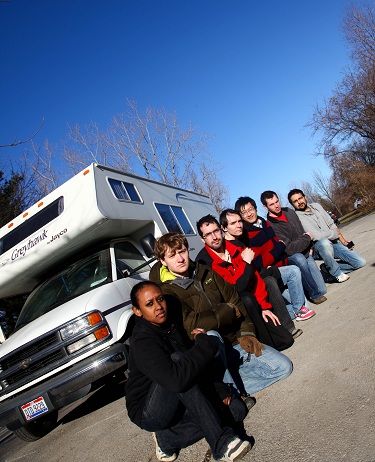Opportunity:
 [1]Identified
[1]Identified -
[2]Understood -
[3]Conceptualized -
[4]Realized -
Team Video
This is a product design project: there wasn't much engineering done until the very end, most of it was spent understanding potential users and their needs.
My team took a fresh look at Recreational Vehicles, with the goal of appealing to additional buyers and moving the industry forward.
We discovered the interior of an RV to be largely isolated from its surroundings to the point of claustrophobia. There was a clear opportunity to build a connection between the user and the external environment, to encourage social interaction and ease transition across this barrier.
Users would not sacrifice their privacy, but clearly wanted a sense of exposure to the elements of nature from within their enclosed space.
A concept RV design embodied our ideas: "Selective Skylight" and "Akimbo Booth"
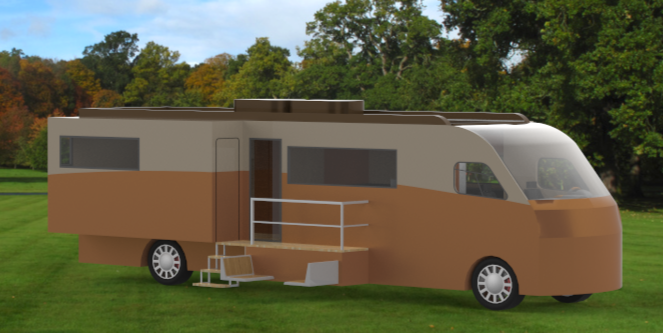
I performed much of the final engineering and took part in the research leading up to it.
Selective Skylight
Skylights are sorely missed by many RV users - who wouldn't want to fall asleep under the stars? Privacy and lighting control are serious issues, and typical RVers don't want to imagine themselves fumbling with a moonroof 2 feet above their head.
With electrochromic window technology, complete privacy and natural beauty are only a light switch away!
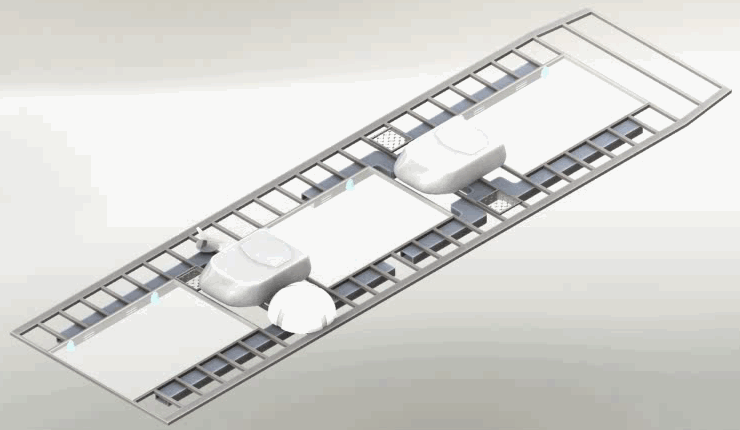
I made this CAD model and animation to illustrate how existing roof systems - climate control, ventilation, lighting and communications - could accommodate our design.
Akimbo Booth
A retractable deck with built-in seating acts as a social hub for activities outside the RV, while a pass-through window means anyone cooking inside isn't cut off from the rest of their family.
The deck space eases the transition into and out of the RV, provides a second door straight into the bathroom, can be used as a seating area and barely affects storage space due to clever design.
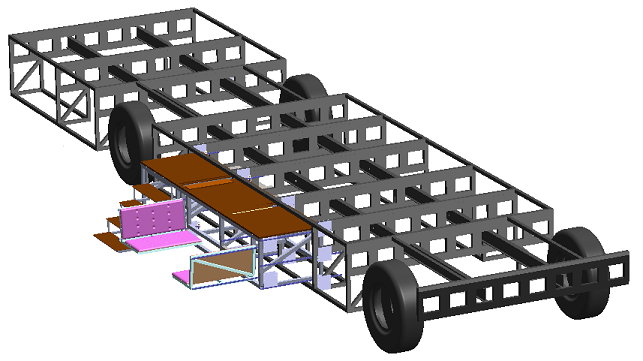
The mechanism is similar to "pop-out" features common to modern RVs and is proven reliable.
The rest of this page documents the process we went through to figure out what users are missing from the RV experience.
Our first step was to get acquainted with the product. Having little experience with recreational vehicles, we went to an RV expo to meet some potential buyers and see the state of the art.

We considered various Social, Economic and Technology (SET) factors during our research.
Social:
- Vacationers are driving more than they are using any other means of transportation.
- When on vacation, families are looking primarily for family time, relaxation, and new experiences
Economic:
- Americans are willing to spend more than any other country on vacationing with 68% of people leaving their house for a vacation
- RVs are attracting young buyers. The fastest growing group of RV owners is young people 18-34
Technology:
- Solar Panel Technology improving and becoming cheaper as alternate power source
- LCD Windows technology can remotely dim or block a window without needing shades
With some preliminary knowledge in hand, we brainstormed some opportunities:

We settled on a core concept which would be called our Product Opportunity Gap:
"Increase the sense of space and reduce the barrier between the inhabitants and the external environment."
To get a deeper understanding of the RV experience, we visited a campground and talked to RV owners about their experience, focusing specifically on the relationship between activities inside and outside the RV.
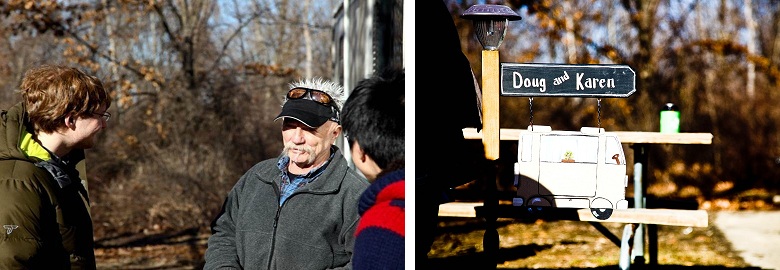
“When we’re in the kitchen, we both feel a little claustrophobic.”
“I think what’s nice is when its warmer and even when it's raining all the windows are open, you can get the breeze and you can smell the air, and that‘s important.”
“RVing gives tremendous freedom... do your own meals where ever you are, spend a night boondocking in a forest and the next at a luxury resort.”
We posted internet surveys, which revealed common perceptions of low quality among users:
“The RV manufacturers either ignore the users needs or don't ask. Also, sometime the designs make us wonder if the designers have ever used an RV.”
“Way too many issues concerning reliability, craftsmanship & durability that should never leave the factory”
We looked at house-boats and yachts for inspiration on designing for confined spaces, conducted patent searches to see what's already been tried, and put together mood boards to identify our target customer.

Boats have outdoor space conducive to social interaction, large social space on roof, 360° visibility. We talked to some recreational boaters to learn what they valued in the experience:
“Even when you’re not sailing, you feel the wind, feel the waves, feeling of connectedness to the ocean”
We talked to customers & employees of REI, who we consider experts on outdoor gear and active participants in outdoor lifestyle:
“[I enjoy] solitude... a fresher setting. When you’re in a city, the air doesn’t feel the same as when you’re in the mountains...”
“I like to snowshoe... I like to ski tour, where I’ll ski in somewhere with my backpack on, and set up camp...”
We even spent time RVing to get closer to the user mindset:
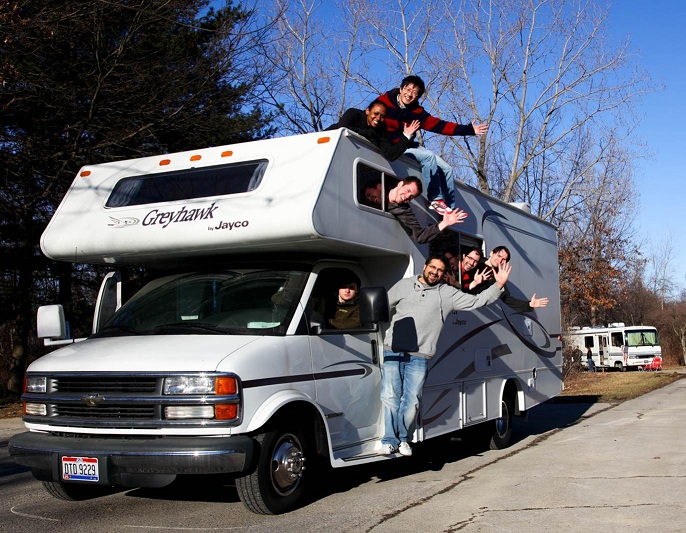
All of this research made it easy for us to imagine scenarios for our users, develop goal state product requirements and break down the key stakeholders involved in the enterprise.
For example:
- Users may be happy with current RV offerings, but they are highly receptive to innovation. They often use aftermarket solutions to solve problems that manufacturers do not address.
- Designers find it difficult to innovate on a product whose form is constrained by opposing functional requirements: maximum habitable space inside and minimum outside footprint to fit existing roads and bridges.
- Executives have a strong need for brand identity, but it's hard to stand out when all RVs look the same: distinguishing features (i.e. paint jobs) can be easily copied.
The result of phase 2 was a deeper understanding of our identified opportunity, and proof that it was real in the minds of RV users.
It was almost two months before we could finally start designing; a mix of individual and group brainstorming left us with several broad categories:

We refined our concepts using trade studies (weighted matrices and so forth), and built physical models of the remaining ideas.
I built the cockpit and bathroom:
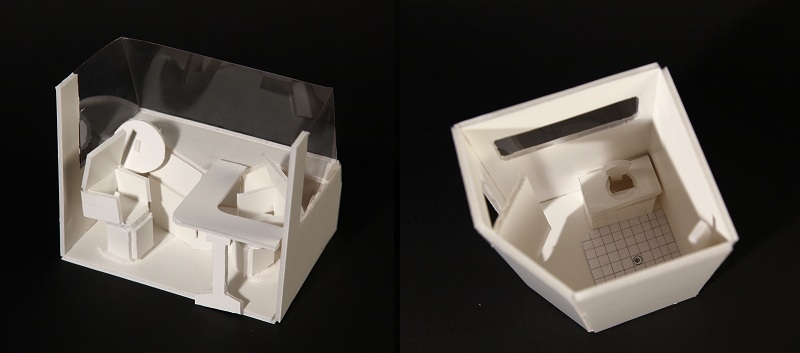
Our models were built to the same scale, so they could be assembled into an integrated concept RV:
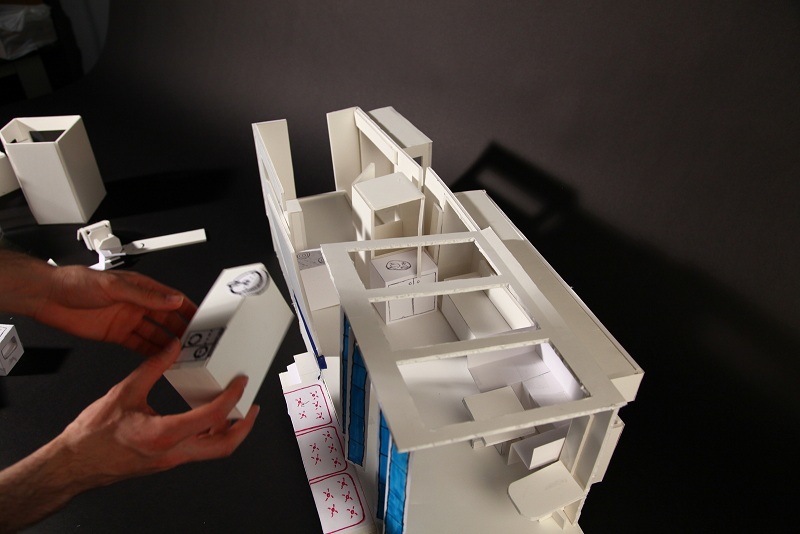
A virtual RV made with Google Sketch-up further refines the combined features:
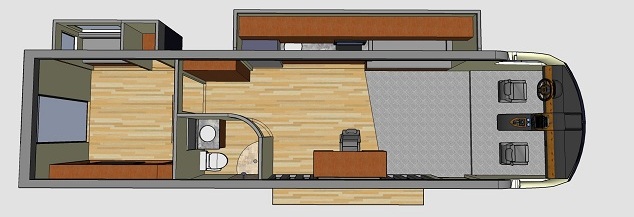
We visited an RV dealership to show our concepts to long-time RVers. Frequent user input is important to keep your design on track.
Their feedback informed our designs, and several concepts were presented at this stage:
Vista Cockpit
- “The front of the RV has the best view in the vehicle.”
- “It would be nice to have somewhere to get your coffee in the morning, when the kids are still sleeping.”
Selective Skylight
- “What I’d like to have is a sunroof. I miss sunroofs.”
- “If I can’t limit the sunlight in my RV, it can get too hot.”
Akimbo Booth
- “We mostly spend our time outside, when it’s nice out”
Slide-out Bathroom
- “I would like my RV to have an entrance directly into the bathroom - yeah, that would be good.”
- "Let me tell you something else that's missing on this... 2 doors.”
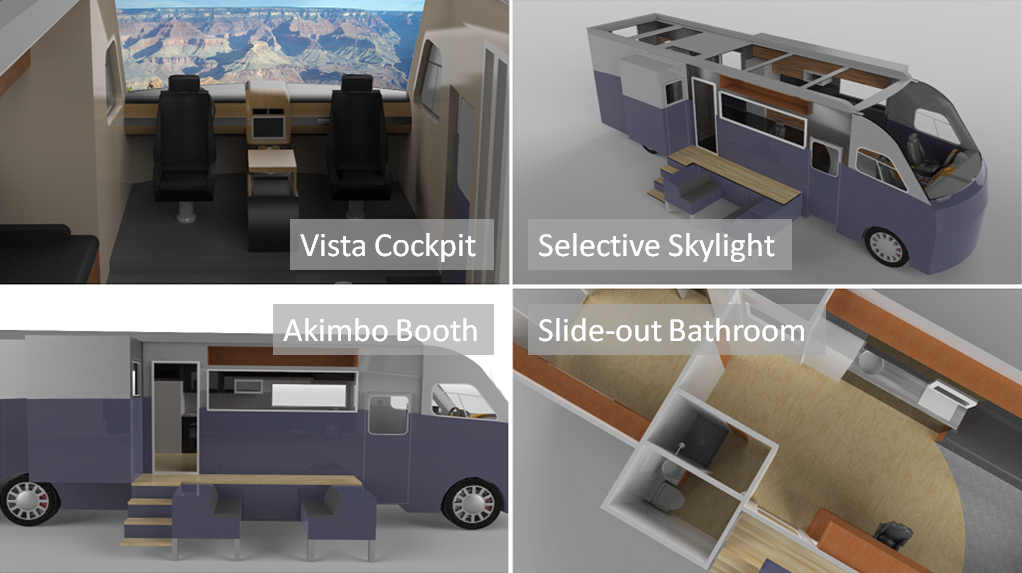
We finally had some solid concepts to fill our Product Opportunity Gap. It was time for the engineering and marketing to begin.
The last phase was spent finalizing the concept, figuring out how everything would work and writing up complete marketing, manufacturing and roll-out plans.
Our designers made some snazzy renderings to communicate the experience of our innovations. This is how we envision the Akimbo Booth and retractable deck in use:

All of the fundamental mechanical details were worked out. An RV frame was created by inferring dimensions from photos, and the deck was constructed around it. A rack-and-pinion system extends and retracts the deck, while a four-bar linkage folds the stairs up compactly without interfering with a propane tank we know to be in that location.
The chairs are pulled out manually, while the railing may be motorized or manual. There is potential to rigidly attach the railing to the deck, and hold it flush against the RV exterior wall to reduce the number of operations.
The Selective Skylight was our second innovation, and it lets you select between privacy and natural wonder at the flip of a switch.

The roof of an RV typically serves lots of other functions besides keeping the rain out, like housing ductwork for heating, ventilation and air conditioning. It must also be strong enough to survive a roll-over and stiff enough not to flex excessively during road travel.
The addition of large skylights displaces some structural tubing, but glass or acrylic can be made strong enough to support someone's weight without making the RV much heavier.
All of the existing functionality can be retained with our modifications:
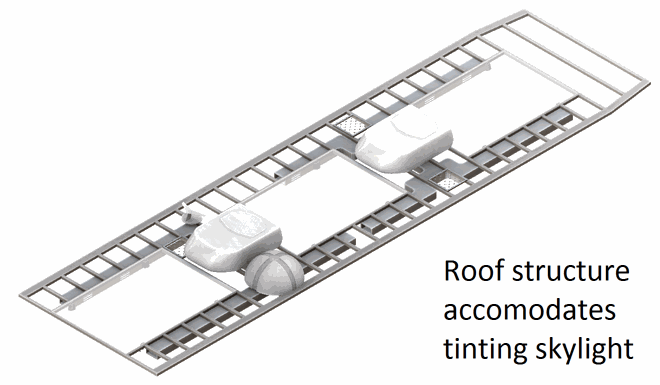
To demonstrate that it would actually work, we made a small functional acrylic model of the Akimbo Booth and conducted full-scale mock-up testing.

Our innovations were presented to Navistar executives at the end of the semester, and were very well received. Patents may be filed in the future.
One of the project requirements was to make a fun 90-second video of our group's experiences throughout the semester. I dare say ours may be the best one:
This team photo is a parody of a photo in our dear professors' recent book,
Built to Love.
Credit goes to Nabil Shahid for this brilliant composition.
